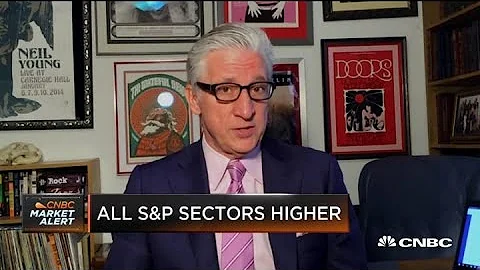Stocks began to rise on Friday after the S&P 500 closed out its worst first half performance in decades in the second half that began on July 1. U.S. stocks rebounded, with the Dow Jones Industrial Average up 321.83 points, or 1.1 %, to 31,097.26. The S&P 500 rose 1.1% to 3,825.33. The Nasdaq Composite Index also rose 0.9% to 11,127.85 points.
Homebuilder stocks pushed the market higher, with PulteGroup up 6.5%, while Lennar and DR Horton both rose more than 5%. Etsy shares rose 9%, leading the S&P 500 higher.
McDonald's led the Dow with a 2.5% gain. Coca-Cola and Boeing also rose more than 2%.
Despite the gains, all major stock indexes posted their fourth weekly decline in five. The Dow lost 1.3% for the week. The S&P 500 fell 2.2% and the Nasdaq fell 4.1%.
Stocks rebound to end the week
S&P 500 rises in first trading day after posting worst first half performance since 1970

Investors remain concerned about warning signs that several companies have lowered their profit guidance, which has increased investment Investors are concerned that decades-high inflation may continue to put pressure on stock prices.
General Motors shares edged up 1.4%, even as the company warned in the second quarter that manufacturing issues could push its net income for the quarter to between $1.6 billion and $1.9 billion. Analysts expect GM to post net income of about $2.5 billion in the second quarter, according to FactSet.
Meanwhile, shares of Micron Technology fell about 3% on disappointing fiscal fourth-quarter guidance. Several other chipmakers also fell. Nvidia fell 4%. Qualcomm , Western Digital and Advanced Micro Devices each fell about 3%.
Kohl’s shares fell 19.6% after the retailer cut its fiscal second-quarter outlook, citing weak consumer spending, and ended talks to sell its business, saying the retail environment had deteriorated since the bidding process began.
The Big Short's Michael Burry warns that financial markets are only halfway through the rout and that companies will see earnings fall next.
Baird investment strategist Ross Mayfield echoed Burry's sentiments, noting that the S&P 500's earnings forecast of 10% year-over-year growth "is probably too high," even amid a modest economic slowdown. He also stressed the need for a peak in inflation, which was at the center of a host of factors that contributed to the stock market's worst performance in the first half of the year.
"The weakness so far has been almost entirely multiple contractions, with gains being the next in the shoes of falling," he told CNBC. "Guidance for the second and third quarter earnings season will ultimately determine the depth of this sell-off, but the market may not be able to sustain a new bull run until inflation and inflation expectations are well under control, and the Fed can at least abandon its hawkish rhetoric."
Manufacturing activity weakens
The Institute for Supply Management said manufacturing activity in June was weaker than expected. The national factory activity index fell to 53 during the month, the lowest reading since June 2020. The ISM's new orders index also fell to 49.2 from 55.1, its first contraction since May 2020.
This all happened a day after the S&P 500 posted a quarterly drop of more than 16% — its biggest quarterly decline since March 2020. In the first half of the year, the broader market index fell 20.6%, the largest first-half decline since 1970. It also fell into bear market territory, down more than 21% from its all-time high set in early January.
The Dow Jones Index and the Nasdaq Index were not immune to the onslaught. The 30-stock Dow Jones index fell 11.3% in the second quarter and is down more than 15% in 2022. Meanwhile, the Nasdaq posted its biggest quarterly loss since 2008, falling 22.4%. The losses pushed the tech-heavy composite index into bear market territory, down nearly 32% from a record high set in November. It is also down 29.5% year to date.
While some on Wall Street are optimistic that the market will recover during the remainder of 2022 — history shows that when the market falls more than 15% in the first half of the year, it tends to rebound in the second half — others are preparing because Inflation lingers and the Federal Reserve tightens monetary policy even further, which could cause a potential rally to roll back.





















